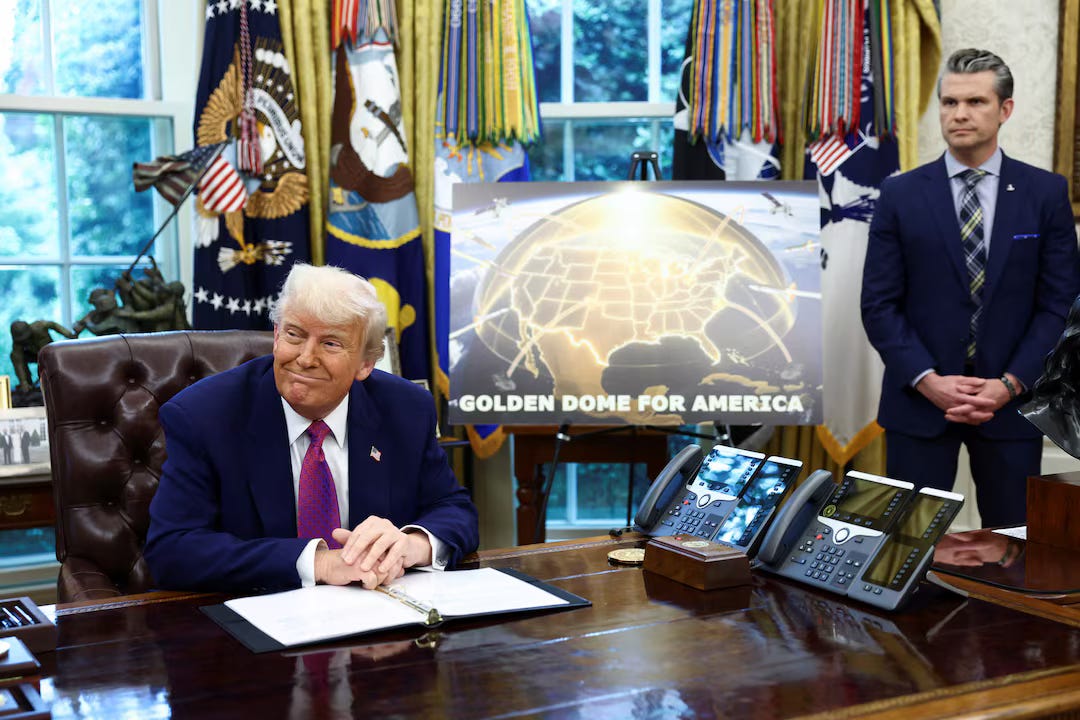The Golden Dome: A Bold Vision for U.S. Missile Defense
In a bold move to bolster the United States' defense capabilities, President Donald Trump has proposed the "Golden Dome," a next-generation missile defense system designed to protect the homeland from a wide array of aerial threats. Initially dubbed the "Iron Dome for America," the Pentagon renamed it the "Golden Dome for America" to reflect its expansive scope and the administration's ambitious vision. Inspired by Israel's Iron Dome but envisioned on a vastly larger scale, this initiative aims to intercept a range of missiles—including advanced hypersonic and ballistic types—potentially even those launched from space. The Golden Dome marks a significant evolution in U.S. missile defense strategy, prioritizing a comprehensive, space-centric approach to national security.
Objectives of the Golden Dome
The Golden Dome's primary mission is to deter adversaries from attacking the U.S. homeland by establishing a formidable shield against diverse missile threats. This encompasses not only conventional ballistic missiles but also emerging challenges such as hypersonic weapons and drone swarms. The system integrates advanced sensors and interceptors—deployed both on the ground and in space—to detect, track, and neutralize threats with exceptional speed and accuracy. Positioned as a cornerstone of President Trump's "peace through strength" doctrine, the Golden Dome seeks to ensure that the United States maintains a decisive edge over potential adversaries in defensive technology and capability.
Technology and Innovation
The Golden Dome hinges on cutting-edge technology, with a particular emphasis on space-based systems. The project envisions a constellation of satellites equipped with advanced sensors to monitor missile launches worldwide. Complementing these are space-based interceptors designed to destroy threats during their boost phase, offering a proactive defense layer. This multilayered system combines ground-based radars, space-based sensors, and sophisticated interceptors, all synchronized through advanced command and control networks leveraging artificial intelligence and real-time data analysis. Leading defense contractors like Lockheed Martin have pledged their expertise in integrated air and missile defense, while innovative firms such as SpaceX are rumored to be contenders for contracts, potentially bringing their space technology prowess to the endeavor.
Financial Aspects
The financial scale of the Golden Dome is staggering. An initial $25 billion has been allocated in a new budget bill, with the total cost estimated at $175 billion over the coming years. However, analysts caution that the ultimate price tag could soar into the trillions over the long term, given the project's complexity and scope. Funding is expected to draw from Department of Defense reallocations, congressional appropriations—such as a proposed $24.7 billion reconciliation package—and possible contributions from allies like Canada, which has shown interest in joining the initiative. The economic implications, both in terms of defense spending and potential job creation, are significant, though they come with concerns about fiscal sustainability.
Challenges and Criticisms
The Golden Dome faces formidable hurdles that temper the optimism of its proponents. Technical feasibility remains a primary concern, with experts questioning whether such an intricate system can be developed and deployed within the administration's ambitious three-year timeline, targeting completion by the end of Trump's term in 2029. The integration of diverse components—ground-based radars, space-based interceptors, and advanced software—presents a "monster systems engineering problem," as critics have dubbed it. Organizational collaboration is another challenge, with the project requiring unprecedented coordination among agencies like the Missile Defense Agency, the Space Force, and multiple military branches. Strategically, the Golden Dome risks igniting a new arms race, as nations like Russia and China may perceive it as a threat to their security, potentially escalating their own offensive capabilities in response.
International Perspectives
The Golden Dome's implications extend far beyond U.S. borders, eliciting varied international reactions. Canada, a key ally, is weighing participation, driven by shared North American security interests. However, Prime Minister Mark Carney faces a delicate balancing act between deepening defense ties and preserving national sovereignty. Conversely, Russia and China view the initiative with alarm. The Kremlin has suggested that the Golden Dome could necessitate renewed nuclear arms talks, citing risks to strategic stability, while China has accused the U.S. of fueling a global arms race. These concerns underscore the project's potential to reshape international security dynamics, for better or worse.
The Golden Dome proposition embodies a daring and ambitious vision for U.S. missile defense, aiming to erect an unparalleled shield against a spectrum of aerial threats. Its potential to enhance national security is significant, promising a deterrent that could redefine America's defensive posture. Yet, this vision is tempered by substantial challenges—technological, financial, and geopolitical—that cast doubt on its feasibility and consequences. Success will hinge on breakthroughs in innovation, seamless interagency collaboration, and deft diplomatic navigation to mitigate international tensions. As the Golden Dome advances, it will remain a lightning rod for debate, scrutiny, and speculation, both at home and abroad, shaping the future of U.S. defense strategy in an increasingly complex global landscape.




